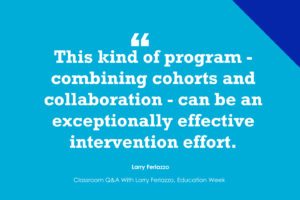
Summer Reading Contest Guide – The New York Times
It’s not enough just to choose something that connects to your life and simply say, “This article was interesting to me because I like to cook and it will help me cook better.” Instead, we hope you’ll pay close attention to what goes through your mind as you read, thinking critically about your own reaction to the text.
You only have about 275 words for a written response and 90 seconds for a video to work with, so this can be done lightly. After all, as Anastasia Economides, a Times staff editor who judged in 2016, pointed out:
At their age, I was always too intimidated to even read The Times, let alone reflect my thoughts on the very big issues that adults with authority are trying to tackle. After reading some of these well-processed statements and passionate opinions and empathetic voices, I have newfound faith in our future leaders-in-the-making.
Ask yourself:
-
How did this piece affect you? Did it teach you something? Challenge you? Reassure you? Move you? Make you angry? What emotions did it stir, and why?
-
What happened as you read? What was going through your mind? What specific lines, quotes, words or details stood out? Why?
-
What questions did it raise for you? What does it make you want to know more about?
-
What connections can you make between this piece or topic and something else you know about? Why? For instance, does it remind you of something else you’ve read, seen or heard? Something you’ve studied in school?
-
What did you think of the piece overall? What were its strengths and weaknesses?
Tips and Examples
Example: In 2017, Hannah Li of Syracuse, N.Y., chose “To Beyoncé or Not to Beyoncé: The Challenges of Confirming the Birth of Her Twins.” Note how she makes sense of The Times’s reporting on Beyoncé by explaining her initial confusion and how she resolved it.
As long as you’re not living under a rock, you know Beyoncé recently had twins. That’s not news. But what was news to me was that The New York Times took great precaution when publishing the story. I mean, it’s Beyoncé! We want all the news we can get regarding her pregnancy. We don’t care if it’s just rumors! Right? Wrong.
In “To Beyoncé or Not to Beyoncé: The Challenges of Confirming the Birth of Her Twins,” Maya Salam explains her process of confirming details. When the rumors first leaked, all the gossip mags and many news sources jumped to publish something about the twins. Facts couldn’t be confirmed since neither Beyoncé or Jay-Z were talking, but that didn’t stop publications. Salam contacted many sources she had deemed reliable but she came back empty-handed from most. Nevertheless, she persisted and eventually found solid information.
This made me realize that The New York Times actually cares about all its facts, even in the most trivial aspects of life. Beyoncé is famous, so gossip mags and fans don’t really pay attention to the fact that even though Queen B is sometimes seen as a goddess, she is, in fact, human. So it’s important to keep the facts about her twins straight. In this era of fake news, it’s important to stay vigilant about what we hear and read, especially on the news. And if news sources have to work hard to get the facts straight on something as lighthearted as Beyoncé, then they must work even harder to maintain the veracity of harder topics.
Example 1: In 2019, Louise Dorisca of Florida chose The 1619 Project, which was not just one article but an entire special edition of The Times Magazine. Notice how, in just 273 words, she manages to write a stirring, beautifully expressed reaction to this complex project.
It’s been 400 years since the first slave ship landed in America. Four-hundred years later, the country it was built upon remains. For me, the word ‘slavery’ brings up images of people, humans, being dragged away from the only home, family, and freedom that they have ever known, and being loaded into floating wooden prisons as cargo. From that moment on, they were no longer humans, they were slaves, and they would forever be.
I thought I could fully wrap my head around the severity of it. However, truthfully, I was never one to lament slavery. I never personally felt victimized by it, though I knew that if I was born only 300 years ago, I would be a slave. When I was younger, I recall my father telling me about his country, Haiti, and how it was the only place on Earth where if a black man stepped foot there, he was free. I now understand that freedom from slavery does not come without a price, and Haiti is still paying for theirs.
America is paying off their freedom, and it is very costly. Traces of slavery are found throughout America’s health care and prison system, in the wealth gap, and in the education we receive, like scattered pieces of broken glass. And as long as those pieces remain, I will be a victim of slavery. Even though I didn’t receive the whip to my back like my ancestors did, the scars will still remain. I am now aware of them. If I continue to be, maybe my children, and their children after, won’t have to be born with those scars, too.
Example 2: In 2024, Ranvir Sharma of London responded to the article “For Stonehenge’s Altar Stone, an Improbably Long Ancient Journey. Watch to see how he comes to appreciate the famous site as “more than just a pile of rocks.”
Source link



